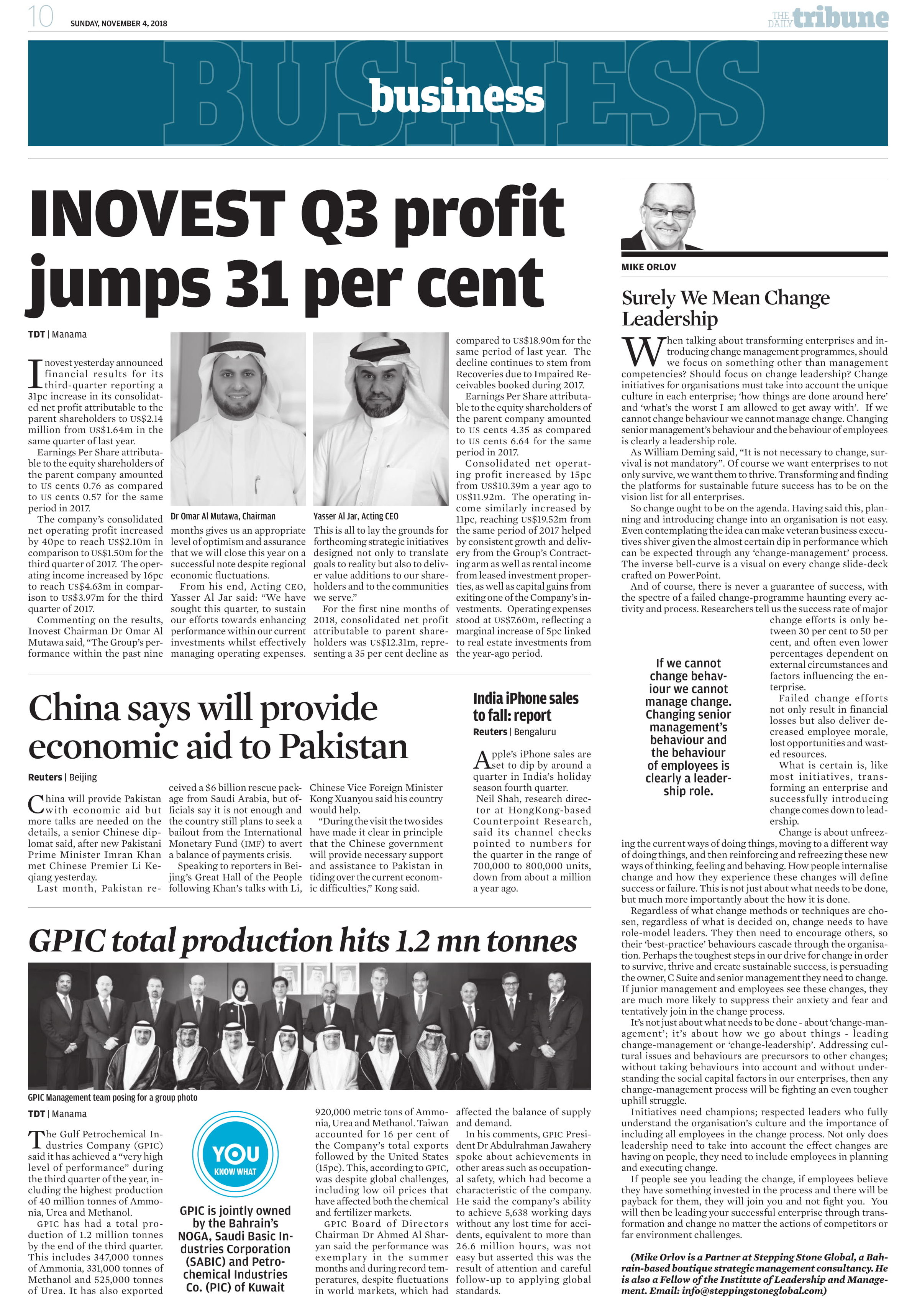 Surely We Mean Change Leadership
Surely We Mean Change Leadership
When talking about transforming enterprises and introducing change management programmes, should we focus on something other than management competencies? Should focus on change leadership? Change initiatives for organisations must take into account the unique culture in each enterprise; ‘how things are done around here’ and ‘what’s the worst I am allowed to get away with’. If we cannot change behaviour we cannot manage change. Changing senior management’s behaviour and the behaviour of employees is clearly a leadership role.
As William Deming said, “It is not necessary to change, survival is not mandatory”. Of course we want enterprises to not only survive, we want them to thrive. Transforming and finding the platforms for sustainable future success has to be on the vision list for all enterprises.
So change ought to be on the agenda. Having said this, planning and introducing change into an organisation is not easy. Even contemplating the idea can make veteran business executives shiver given the almost certain dip in performance which can be expected through any ‘change-management’ process. The inverse bell-curve is a visual on every change slide-deck crafted on PowerPoint.
And of course, there is never a guarantee of success, with the spectre of a failed change-programme haunting every activity and process. Researchers tell us the success rate of major change efforts is only between 30 per cent to 50 per cent, and often even lower percentages dependent on external circumstances and factors influencing the enterprise.
Failed change efforts not only result in financial losses but also deliver decreased employee morale, lost opportunities and wasted resources.
What is certain is, like most initiatives, transforming an enterprise and successfully introducing change comes down to leadership.
Change is about unfreezing the current ways of doing things, moving to a different way of doing things, and then reinforcing and refreezing these new ways of thinking, feeling and behaving. How people internalise change and how they experience these changes will define success or failure. This is not just about what needs to be done, but much more importantly about the how it is done.
Regardless of what change methods or techniques are chosen, regardless of what is decided on, change needs to have role-model leaders. They then need to encourage others, so their ‘best-practice’ behaviours cascade through the organisation. Perhaps the toughest steps in our drive for change in order to survive, thrive and create sustainable success, is persuading the owner, C Suite and senior management they need to change. If junior management and employees see these changes, they are much more likely to suppress their anxiety and fear and tentatively join in the change process.
It’s not just about what needs to be done – about ‘change-management’; it’s about how we go about things – leading change-management or ‘change-leadership’. Addressing cultural issues and behaviours are precursors to other changes; without taking behaviours into account and without understanding the social capital factors in our enterprises, then any change-management process will be fighting an even tougher uphill struggle.
Initiatives need champions; respected leaders who fully understand the organisation’s culture and the importance of including all employees in the change process. Not only does leadership need to take into account the effect changes are having on people, they need to include employees in planning and executing change.
If people see you leading the change, if employees believe they have something invested in the process and there will be payback for them, they will join you and not fight you. You will then be leading your successful enterprise through transformation and change no matter the actions of competitors or far environment challenges.

One Comment